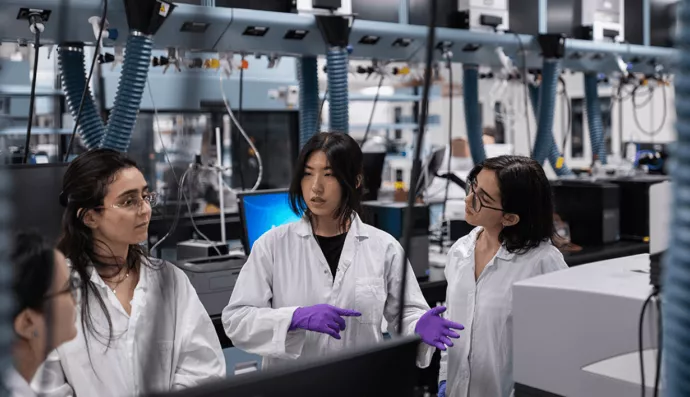
INSPIRE Scholars Drug Discovery Program Celebrates Summer Launch
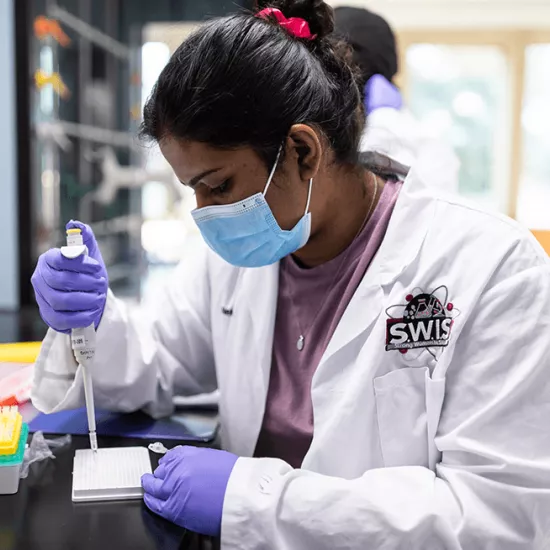
This summer, twenty-three budding scientists gathered on campus for the inaugural Interdisciplinary Summer Program in Research and Entrepreneurship (INSPIRE), an intensive four-week program designed to introduce undergraduate students to the role of interdisciplinary biophysical science in drug discovery and innovation. The program was offered by the Centre for Medicinal Chemistry (CMC) in partnership with IMIx Executive Programs at UTM’s Institute for Management & Innovation, and participants learned of the array of opportunities available to them — both in graduate school and beyond.
INSPIRE was organized by Josh Milstein and Scott Prosser, both professors in the Department of Chemical & Physical Sciences (CPS). With the development of the new Centre for Medicinal Chemistry underway, opportunities will soon arise for potential students and faculty alike — and these scientists are working to draw both to campus to learn about the exciting research happening at UTM.
“A lot of times, when we recruit for graduate school, we don’t do a very good job of letting students know what they can do with it. They see me, a scientist, a faculty member at a university. But there are a lot of PhDs working in all sorts of other places—where are they? Where do they work? And I think that at a younger age, it’s good for them to know that there are a lot of opportunities for a career in science. It gets them excited, and lets them know, ‘hey, there’s a lot I can do here.’”
—Dr. Josh Milstein, Associate Professor of Physics at U of T
The new summer offering was nearly a year in the making. While Milstein and Prosser organized things behind the scenes, five graduate students were brought in as teaching assistants via the CPS Teaching Fellowship Program, developing modules and then helping to run them. Postdoctoral fellow Taleb Sedighi and graduate student Tudor Radu were set up as lead instructors, with various faculty members pulled in for teaching and administrative support.
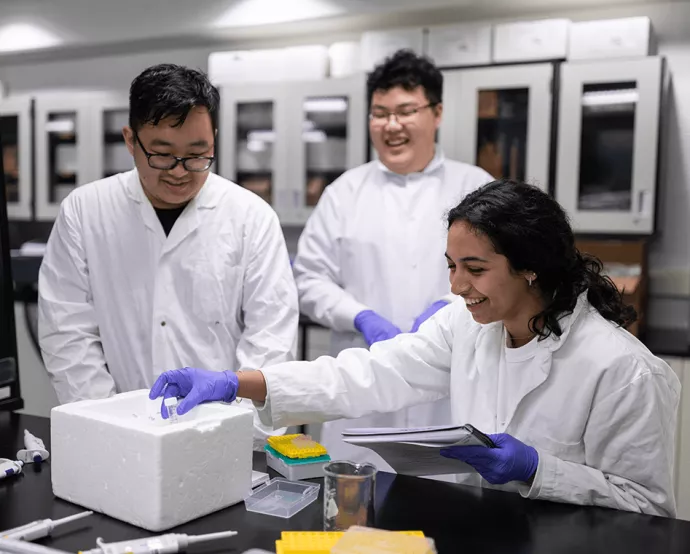
This year’s inaugural theme was “GPCR Pharmacology.” Not sure what that is? G-protein-coupled receptors (GPCR) are proteins embedded in the membrane in most mammalian cells, Milstein explains. Involved in all sorts of cellular signaling, they’re popular pharmaceutical targets, and are being studied widely by scientists. Focusing on GPCRs provided organizers the perfect opportunity to reach out to fellow faculty members whose research would complement the program.
The program ran June 13 to July 8, wrapping up this past week. Milstein is quick to credit the grad students for its success — and it proved to be a wonderful experience for them as well. “For someone in the early phase of his career and looking to develop as a science educator, INPSIRE gave me the opportunity to organize and plan courses, learn new things, and network with people in the field,” shares Balmiki Kumar, one of the postdoctoral fellows who was instrumental in organizing and running the event.
For Kumar, the opportunity to speak with students early on in their academic career was incredibly rewarding; he recognizes the importance of helping young researchers develop an appreciation for scientific methods and achievements, and the program gave them the chance to learn material not often taught at the undergraduate level.
“For someone still in the early phase of his career and looking to develop as a science educator, INSPIRE helped me to reflect and work on the skills needed to disseminate knowledge. It required preparation and organization, and gave me the opportunity to plan courses, learn new things, and network with people in the field.”
—Balmiki Kumar, Postdoctoral Fellow
But if you think students sat in classrooms all day, you’d be mistaken. Participants from across disciplines, schools, and geographic locations enjoyed interactive lectures from industry experts, dedicated lab time, networking events, bootcamps, and plenty of sunny social hours. The goal was to give them a broad introduction to biophysical techniques, develop their soft skills, learn more about graduate school, and understand the role that biophysics play in something like drug development.
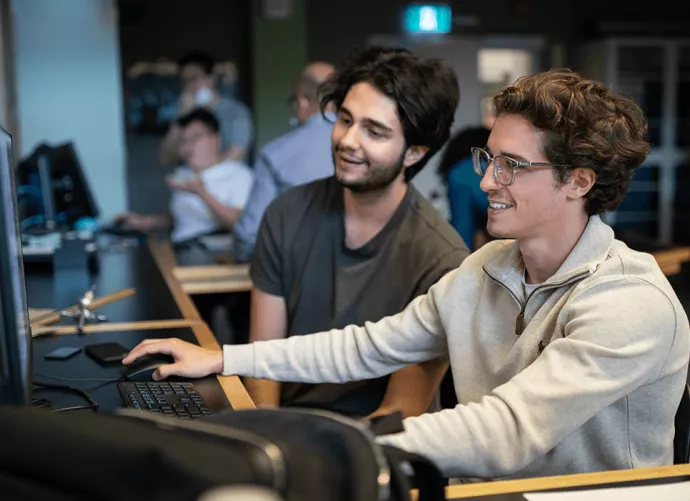
“We had a number of people from drug companies come in; we had a whole course on entrepreneurship and the innovation economy in Canada,” says Milstein. “We focused on questions like what is a startup? How do you generate intellectual property? What would you do if you thought you had something in your lab that could somehow be translated into a company?”
The team wanted students to get as close to doing science as possible; they weren’t just reading or hearing about how things work, but experimenting, doing things like purifying proteins from scratch. It was set up rather like a cooking show, with pre-made backups at the ready to keep things moving if something went wrong. Lectures were purposefully kept brief and engaging, with the emphasis placed on creative and critical thinking, collaboration, and discussion.
"We had them actually try to do these things,” Milstein says, “and if it failed, it didn’t really matter, because they were actually at the bench.”
“I think the most valuable aspect of INSPIRE was its interdisciplinary nature. Students had backgrounds in various science disciplines, and the program gave them the opportunity to look at the field from other perspectives and practice working in interdisciplinary teams—as they’ll experience if they enter this field.”
—Taleb Sedighi, Postdoctoral Fellow
“And a lot of them had never seen stuff like that,” he adds. “We had future biologists, chemists, all going into the lab and being wowed. We really showed them that science is interdisciplinary — because when you’re in a university, you might think it’s not. You take your major, you take those courses, but most science nowadays is not within a silo.”
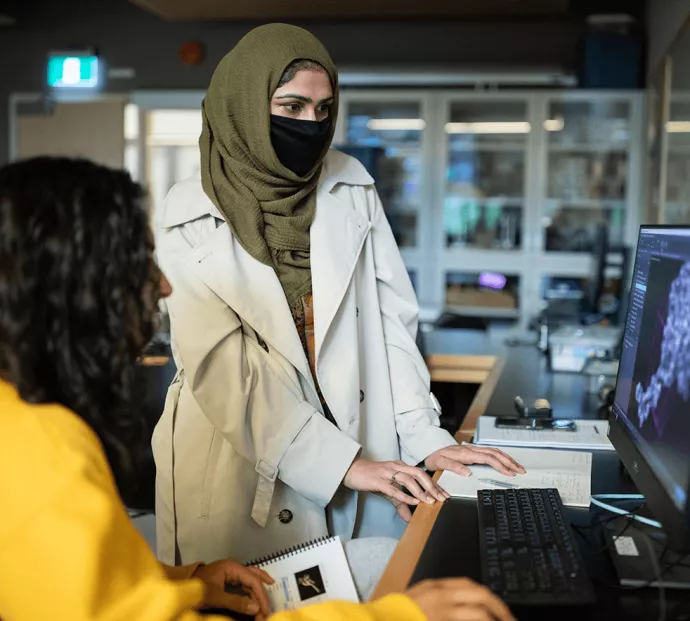
“I think the interdisciplinary nature was its most valuable aspect,” agrees Sedighi. “Students had backgrounds in various science disciplines, and the program gave them the opportunity to look at the field from other perspectives and practice working in interdisciplinary teams — as they’ll experience if they enter this field.”
Bringing together science and entrepreneurship in a way that responds to each student’s unique interests is an innovative way to respond to a changing economic and professional landscape — and Milstein hopes the teaching model gives them a jumpstart.
“In the past, maybe you thought you were going to become a college professor, but most people aren’t going to do research as a professor,” he explains. “They’re going to get industry jobs or they’re going to create their own jobs. They’re going to start their own companies. The idea is to plant the seed that they could be their own boss in the future; they could develop something that turns into a company that contributes to the life science economy here in Canada. It’s an exciting idea.”
As for the students, feedback is still underway — but the response so far has been overwhelmingly positive. For fourth-year Biology student Nicolas Rea, the immersive program helped him learn about what U of T has to offer graduate students, and he was excited to learn of the many possibilities of a career in the sciences.
“It was truly unlike any other undergraduate experience,” he shares. “The intimate class size made for collaborative and supportive discussions, and I developed skills pertinent to my future career as a researcher — and I made plenty of friends and connections along the way.”
“I recommend the INSPIRE program to all students—whether they’re undecided on pursuing graduate studies or seeking an excellent research experience. This program introduced me to the possibilities U of T has to offer in terms of graduate level education, all while helping me develop my personal skillset and professional network.”
—Nicolas Rea, 4th year Biology Student at UTM
Milstein was pleasantly surprised to see those connections being made from the get-go, what he sees as the result of a shared passion for the material. “I was struck by the camaraderie that naturally occurred—you’re bringing these people together from very different sciences and they really seemed to be bonding about the subjects.”
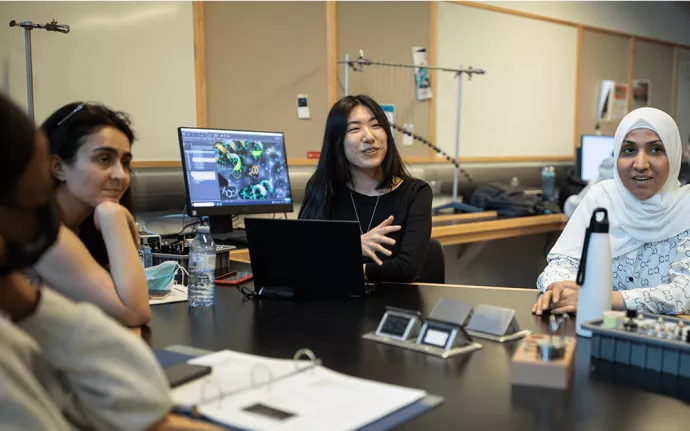
This first year, Milstein and Prosser were targeted in their approach, focusing on selecting a strong and diverse undergraduate cohort. They kept diversity in mind throughout the process, offering funding for Black and Indigenous students who may have needed support, and making efforts to draw young women into the program. And it worked. Milstein reports that an impressive two-thirds of participants were female — one flew all the way in from Brazil — and he hopes the program has inspired some of them to attend grad school.
"Many students are enthusiastic for research opportunities, especially those who missed out on in-person lab experiences during the pandemic. INSPIRE is a great program that is accessible to students in the summer to get hands-on training and learn about real-world applications. I presented research on single-molecule protein detection, and the INSPIRE students were highly engaged with many questions, showing their excitement in the course. It has also been a wonderful way for students to meet faculty here at UTM — I have had several follow up conversations with students that I met at the INSPIRE seminar about research, career opportunities, and research life in general."
—Dr. Alana Ogata, Assistant Professor of Chemistry at U of T
Part of that meant ensuring they understood there’s a place for them here. “We really wanted students to see people that look like them,” says Milstein. Five female faculty members participated — and that visibility goes a long way to inspiring a new generation of scientists.
He laughs. “My wife came with me to the picnic dinner we organized for the students and told me, ‘There are five women standing around in a circle joking about quantum mechanics. You did a good job. This is a really good thing.’”
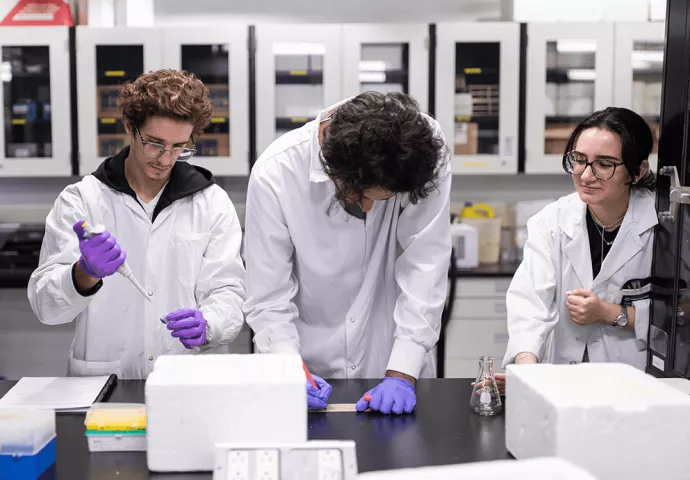
So, what’s next for INSPIRE? Plans are underway for future programming, and Milstein hopes to one day move modules from the teaching labs into the research labs. “So, we’d have each participating faculty member commit to having a graduate student with them to develop something within their lab,” he explains. “Then, we’d work out a rotation. Have maybe five or six modules which students could pick from, but then they’d get to be in an actual research lab throughout most of the program.”
“That’s the big ‘INSPIRE 2.0’ idea I have,” he smiles, “and we’ll see how faculty respond or if it’s practical. But when the students went into the labs, they were really excited. And if there’s a way to build in and share the cutting-edge work we’re doing here at UTM, that would be phenomenal.”
